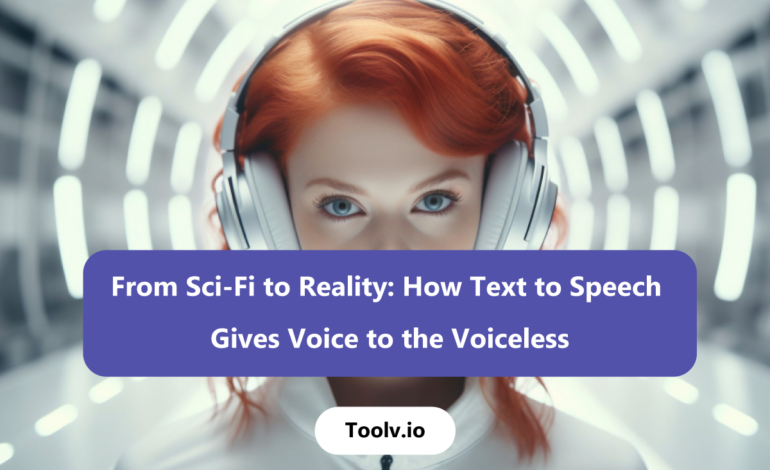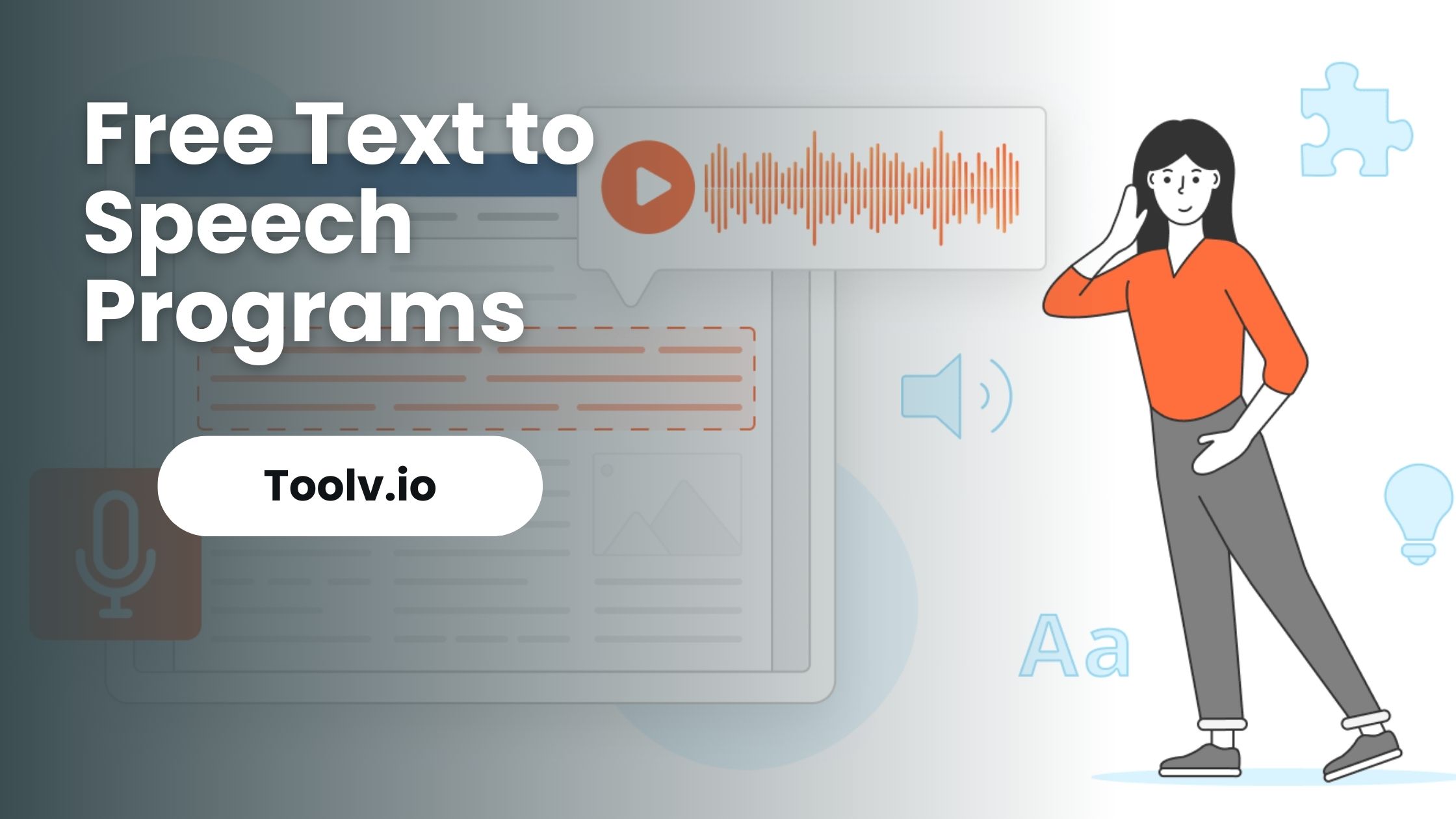From Sci-Fi to Reality: How Text to Speech Gives Voice to the Voiceless

In the not-so-distant past, the idea of machines speaking in human-like voices was the stuff of science fiction. Today, text to speech technology has not only become a reality but a vital tool transforming the lives of millions. From empowering individuals with speech disabilities to enhancing communication in everyday settings, this technology is reshaping how we interact with digital content and the world around us.
Advancements in ai text to speech have propelled these systems beyond robotic tones into natural, expressive voices that mimic human nuances. Whether for accessibility, education, or entertainment, the ability to convert written text into spoken words opens new doors for inclusivity and creativity. This article explores the revolutionary journey of text to speech, its current applications, and how it’s truly giving a voice to the voiceless in 2025.
The Evolution of Text to Speech Technology
The roots of text to speech online services can be traced back to early computer-generated voices that sounded mechanical and lacked emotional depth. However, rapid advancements in artificial intelligence and machine learning have dramatically improved the quality and usability of these systems. Now, free and premium versions alike deliver voices that are so lifelike they often blur the line between human and machine.
What sets modern systems apart is their ability to understand context, intonation, and even regional accents. These text to speech voices create a more immersive and relatable experience, especially for users who depend on such tools daily. Whether navigating through a screen reader or listening to an audiobook, the experience is far richer than what was possible just a few years ago.
Breaking Barriers: Accessibility and Empowerment
One of the most profound impacts of text to speech free tools is on people who face speech or reading challenges. For individuals with conditions like ALS, cerebral palsy, or aphasia, traditional communication methods can be difficult or impossible. Text to speech technology offers a new way to express thoughts, participate in conversations, and maintain independence.
Beyond disabilities, this technology benefits those with learning differences such as dyslexia, helping them absorb information more effectively. It also assists non-native speakers and individuals with low literacy by providing clear spoken language. As a result, text to speech online platforms have become indispensable in educational and therapeutic settings.
AI-Powered Voices: The New Standard
The surge in ai text to speech has introduced voices that are not only clear but adaptive. These AI voices can adjust their tone based on the context—reading a children’s story in a playful manner or delivering a business report with professionalism. Such flexibility enhances engagement and comprehension, proving essential in sectors like customer service, e-learning, and entertainment.
Moreover, AI-driven text to voice generator tools are increasingly user-friendly, allowing anyone to generate speech with just a few clicks. These platforms often support multiple languages and dialects, making communication more inclusive globally. The accessibility of these tools means that businesses and individuals can easily convert written content into spoken form without requiring expensive or complicated setups.
Free Online Text to Speech: Democratizing Voice Technology
The availability of free online text to speech services is a game-changer, especially for small businesses, educators, and content creators who might not have large budgets. These platforms offer a cost-effective way to add voiceovers to videos, create audiobooks, or develop accessible websites. Importantly, they lower the entry barrier, enabling more people to harness the power of voice technology.
While some free tools may have limitations like fewer voice options or shorter usage times, many now offer surprisingly high-quality output. Users can select from various text to speech voices and customize speed, pitch, and volume to suit their needs. This democratization is fostering innovation and creativity across industries.
Text to Audio Free: Expanding Content Consumption
The rise of text to audio free converters has coincided with increasing demand for audio content. Podcasts, audiobooks, and voice-guided tutorials are more popular than ever. For busy individuals, listening to content is often more convenient than reading, especially on the go.
Converting blogs, articles, and reports into audio using text to speech technology enables wider reach and accessibility. It allows content to resonate with audiences who prefer auditory learning or those with visual impairments. This shift not only broadens engagement but also encourages creators to think about content in multiple formats.
Enhancing Digital Communication and Marketing
Marketers and businesses are quick to adopt text to speech generator tools to create personalized audio messages, interactive voice ads, and automated customer support systems. These technologies enable brands to engage consumers in more natural and impactful ways.
Voice assistants powered by text to speech enhance user interaction on websites and apps, offering help and information instantly. This integration improves customer satisfaction and reduces workload on human agents. The ability to craft messages in diverse voices also allows brands to better reflect their identity and target audiences.
The Role of Text to Speech in Education
Educational institutions and e-learning platforms are embracing text to speech technology to provide inclusive learning environments. Students with disabilities, language learners, and those with different learning preferences benefit greatly from hearing content read aloud. This auditory reinforcement enhances comprehension and retention.
Teachers use text to speech free tools to create interactive lessons, audio quizzes, and accessible materials. The ability to switch between multiple voices and languages supports multicultural classrooms. As remote learning becomes more prevalent, these tools bridge the gap by making lessons accessible anytime, anywhere.
Text to Speech and Mental Health Support
An emerging application of ai text to speech technology is in mental health services. Virtual therapists and wellness apps use human-like voices to deliver guided meditations, cognitive behavioral therapy exercises, and motivational messages. This approach offers comfort and companionship, especially to those hesitant to seek in-person support.
By combining natural-sounding voices with empathetic scripting, text to speech technology makes digital mental health tools more engaging and approachable. This innovation expands access to care and provides users with flexible support options.
Text to Speech in the World of Entertainment
The entertainment industry is harnessing text to speech voices to create dynamic content, including audiobooks, podcasts, and interactive games. Voice synthesis allows creators to produce narratives without needing professional voice actors, reducing production costs and time.
Gaming companies integrate text to voice generator tools for character dialogues, enhancing player immersion. Additionally, content creators use text to speech to add unique audio effects or to experiment with different vocal styles, making entertainment more diverse and innovative.
Overcoming Language Barriers with Text to Speech
Globalization and digital communication demand tools that can cross language divides seamlessly. Many text to speech online platforms support multiple languages and accents, helping users connect regardless of native tongue.
Travelers, businesses, and educators benefit from these capabilities, which improve understanding and reduce miscommunication. As voice technology improves, simultaneous translation combined with text to speech could become standard, breaking down communication walls even further.
How Businesses Are Leveraging Text to Speech
Businesses are increasingly adopting text to speech free tools to optimize operations and customer interactions. From automated phone systems to voice-enabled apps, the technology helps streamline workflows and improve user experience.
Companies use synthetic voices to provide 24/7 support, handle inquiries, and deliver personalized messages. This reduces costs associated with human staff and increases response speed, enhancing overall efficiency and customer satisfaction.
The Environmental Impact of Text to Speech Technology
An often-overlooked benefit of text to speech generator tools is their environmental footprint compared to traditional media. Producing audio content digitally consumes less energy and resources than physical books, CDs, or broadcasting.
By enabling digital consumption, text to speech helps reduce paper usage and transportation emissions. As awareness of sustainability grows, the technology aligns well with eco-friendly goals and practices.
The Future of Text to Speech: Personalized and Emotional Voices
Looking forward, the most exciting developments in text to speech revolve around personalization and emotional expression. AI systems are being trained to detect user mood and tailor voice output accordingly, making interactions feel more human.
Such emotional intelligence could transform how we use voice assistants, mental health apps, and entertainment media. This evolution promises richer, more empathetic digital communication that adapts to individual needs.
Challenges and Ethical Considerations
Despite its many benefits, text to speech technology raises important ethical questions. The ability to clone voices or generate deepfake audio presents risks of misuse, including identity theft or misinformation.
Developers and regulators must work together to establish safeguards, ensuring transparency and consent in voice synthesis. Promoting responsible use will be crucial as these technologies become even more powerful and widespread.
How to Get Started with Text to Speech Tools
For those interested in exploring this technology, many platforms offer intuitive interfaces and tutorials. Whether you want to convert articles to audio or create engaging voice content, starting with a reliable text to speech tool is key.
For writers and content creators, pairing this technology with a paraphrasing tool can enhance the quality of written material before converting it to speech, resulting in clearer and more engaging audio output.
Conclusion: A Voice for Everyone
From its humble beginnings to its current transformative role, text to speech technology is a beacon of inclusion and innovation. It amplifies voices that might otherwise go unheard, opening doors for people with disabilities, learners, creators, and businesses worldwide. As these tools become more advanced and accessible, their impact will only deepen, turning what was once science fiction into everyday reality.
Frequently Asked Questions
What is text to speech technology?
Text to speech technology converts written text into spoken words using computer-generated voices, helping users listen to content instead of reading it.
Are there free text to speech tools available?
Yes, many platforms offer free text to speech services online, allowing users to generate speech without cost, though sometimes with limited features.
How is AI improving text to speech?
AI enhances text to speech by creating more natural, expressive voices that adapt to different contexts, making the audio output sound more human-like.
Can text to speech be used for accessibility?
Absolutely, text to speech is vital for individuals with speech or reading disabilities, offering an alternative way to communicate and consume information.
Is text to speech useful for content creators?
Yes, it helps creators produce audio versions of their content, reach wider audiences, and add voiceovers to videos or podcasts efficiently.
If you want to explore more about improving and refining your written content before using text to speech, check out this handy paraphrasing tool that can help elevate your writing effortlessly. For an advanced and easy-to-use solution, visit the main text to speech tool that brings these voices to life.





